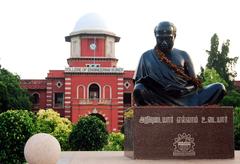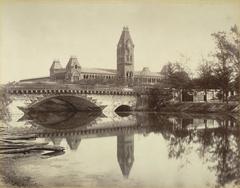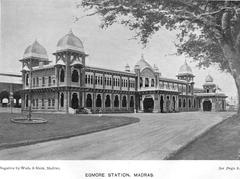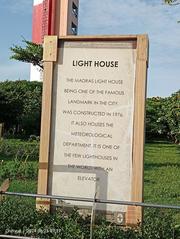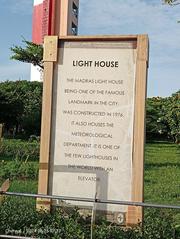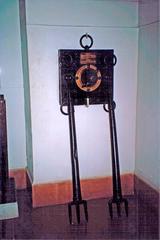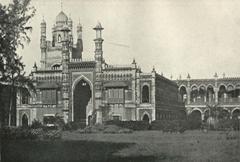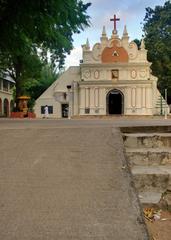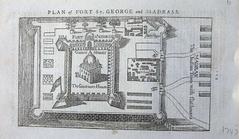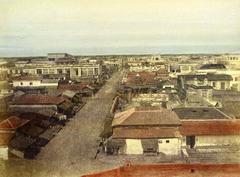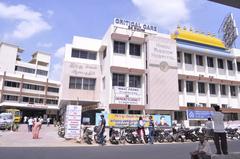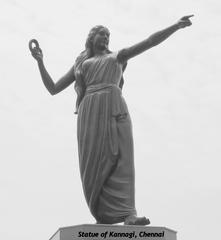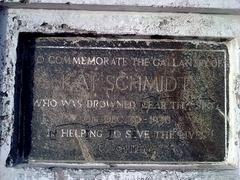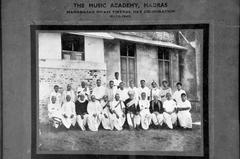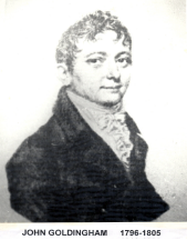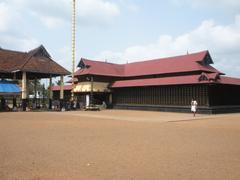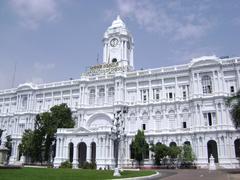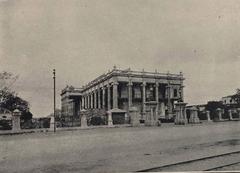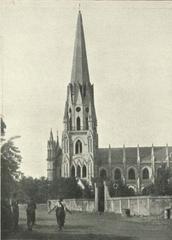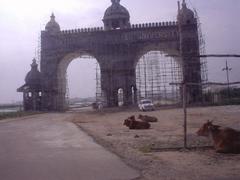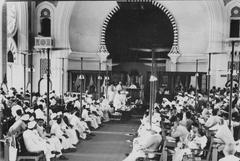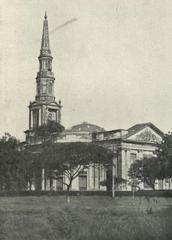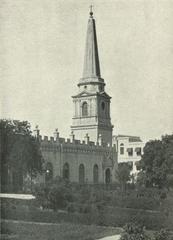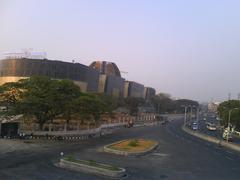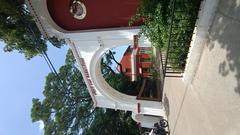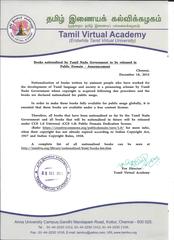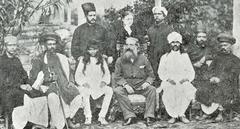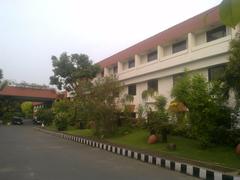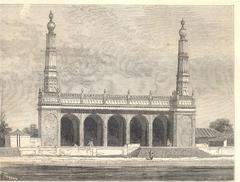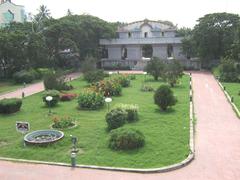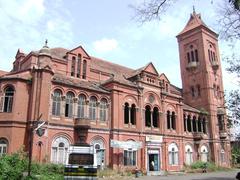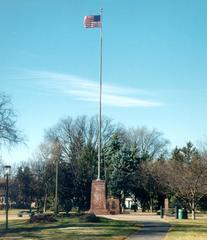Guide to Visiting Marudeeswarar Temple in Chennai
Date: 17/07/2024
Introduction
The Marudeeswarar Temple, located in Thiruvanmiyur, Chennai, is an architectural and cultural gem dedicated to Lord Shiva. Its origins date back to the Chola dynasty, with significant contributions from the Vijayanagara Empire, making it a fascinating blend of South Indian architectural styles. This temple not only stands as a testament to the devotion and artistic prowess of ancient dynasties but also serves as a spiritual haven, attracting thousands of devotees and tourists annually. The temple’s significance is amplified by its association with Sage Valmiki and the Bhakti movement, adding layers of mythological and devotional importance. In this comprehensive guide, we will explore the rich history, architectural marvels, and practical visitor information, including visiting hours, ticket prices, and travel tips, to help you plan your visit to this timeless monument. For more detailed information, you can visit the Tamil Nadu Tourism website or the Archaeological Survey of India.
Table of Contents
- Introduction
- Historical Background of Marudeeswarar Temple
- Visitor Information
- Modern Era and Preservation Efforts
- FAQ
Historical Background of Marudeeswarar Temple
Origins and Early History
The Marudeeswarar Temple’s origins date back to the Chola dynasty, which ruled from the 9th to the 13th centuries. The Cholas were known for their patronage of art, architecture, and religion, and the Marudeeswarar Temple is a testament to their devotion and architectural prowess. The temple is believed to have been constructed during the reign of Chola king Rajendra Chola I (1012-1044 CE), although some historians suggest that the temple’s foundations may have been laid even earlier.
Architectural Evolution
The temple’s architecture has evolved over the centuries, reflecting the various dynasties that have ruled the region. The Chola dynasty initially constructed the temple using granite, a material that was abundant in the region. The temple’s Dravidian architectural style is characterized by its towering gopurams (gateway towers), intricate carvings, and expansive courtyards. The main sanctum, or garbhagriha, houses the lingam, a representation of Lord Shiva.
During the later periods, particularly under the Vijayanagara Empire (1336-1646 CE), the temple underwent significant renovations and expansions. The Vijayanagara rulers added several mandapams (pillared halls) and gopurams, enhancing the temple’s grandeur. The temple’s current structure is a blend of Chola and Vijayanagara architectural styles, making it a unique example of South Indian temple architecture.
Mythological Significance
The Marudeeswarar Temple is steeped in mythology and is associated with several legends. One of the most popular legends is that of Sage Valmiki, the author of the Ramayana. According to the legend, Sage Valmiki worshipped Lord Shiva at this very site, and the temple’s name, Thiruvanmiyur, is derived from “Thiru-Valmiki-Ur,” meaning the place of Sage Valmiki. The temple is also linked to the legend of the Marundeeswarar, or the “Lord of Medicines.” It is believed that Lord Shiva imparted the knowledge of medicinal herbs to Sage Agastya at this site, which is why the temple is considered a place of healing.
Inscriptions and Historical Records
The temple complex houses several inscriptions that provide valuable insights into its history. These inscriptions, primarily in Tamil and Sanskrit, date back to the Chola period and offer details about the temple’s construction, donations, and rituals. One notable inscription from the reign of Rajendra Chola I mentions the donation of land and resources for the temple’s maintenance and the performance of daily rituals.
Another significant inscription from the Vijayanagara period records the contributions made by the rulers for the temple’s renovation and the establishment of various endowments. These inscriptions are crucial for historians and archaeologists as they offer a glimpse into the socio-economic and religious life of the period.
Role in the Bhakti Movement
The Marudeeswarar Temple played a vital role in the Bhakti movement, a devotional movement that swept across South India between the 7th and 9th centuries. The temple was a center for the Nayanars, a group of 63 saints devoted to Lord Shiva. The hymns and devotional songs composed by these saints, known as the Tevaram, are still sung in the temple today. The temple’s association with the Bhakti movement underscores its importance as a spiritual and cultural hub.
Visitor Information
Visiting Hours and Tickets
The Marudeeswarar Temple is open to visitors daily from 6:00 AM to 12:00 PM and from 4:00 PM to 9:00 PM. There is no entry fee for visiting the temple; however, donations are welcome and contribute to the temple’s maintenance and activities.
Travel Tips
- Best Time to Visit: The ideal time to visit the temple is during the early morning or late evening when the weather is pleasant, and the temple is less crowded.
- Dress Code: Visitors are advised to dress modestly, covering their shoulders and knees, as a sign of respect for the religious site.
- Photography: While photography is allowed in the temple premises, it is restricted inside the sanctum sanctorum. Always ask for permission before taking photos.
Nearby Attractions
- Thiruvanmiyur Beach: A serene beach located just a few kilometers from the temple, perfect for a relaxing stroll.
- Shirdi Sai Baba Temple: Another popular temple in the vicinity, dedicated to Shirdi Sai Baba.
- Chennai Lighthouse: Offering panoramic views of the city and the coastline, the lighthouse is a must-visit.
Accessibility
The Marudeeswarar Temple is accessible by various modes of transport:
- By Air: The nearest airport is Chennai International Airport, approximately 15 km from the temple.
- By Train: The Chennai Central Railway Station is about 16 km away. Local trains also connect to Thiruvanmiyur Station.
- By Road: The temple is well-connected by road, and public buses, taxis, and auto-rickshaws are readily available.
Modern Era and Preservation Efforts
In the modern era, the Marudeeswarar Temple continues to be a significant religious and cultural landmark. The temple is managed by the Hindu Religious and Charitable Endowments Department of the Tamil Nadu government, which oversees its maintenance and preservation. Several initiatives have been undertaken to preserve the temple’s architectural and cultural heritage, including restoration projects and the digitization of inscriptions.
The temple also plays a crucial role in the local community, hosting various festivals and cultural events throughout the year. The annual Brahmotsavam festival, celebrated with great fervor, attracts thousands of devotees from across the country. The temple’s vibrant cultural life and its historical significance make it a must-visit destination for anyone interested in Chennai’s historical sites and South Indian history and culture.
FAQ
- What are the visiting hours of Marudeeswarar Temple? The temple is open daily from 6:00 AM to 12:00 PM and from 4:00 PM to 9:00 PM.
- Is there an entry fee for Marudeeswarar Temple? No, there is no entry fee, but donations are welcome.
- What is the best time to visit Marudeeswarar Temple? Early morning or late evening is the best time to visit for a pleasant experience.
Conclusion
The Marudeeswarar Temple in Chennai is more than just a religious site; it is a repository of history, culture, and architectural brilliance. From its origins in the Chola dynasty to its expansions under the Vijayanagara Empire, the temple offers a unique glimpse into the architectural and spiritual traditions of South India. Its role in the Bhakti movement and its association with legends like Sage Valmiki further enrich its cultural tapestry. Today, the temple continues to be a vibrant center of worship and cultural activities, thanks to ongoing preservation efforts by various heritage organizations. Whether you are a devotee, a history enthusiast, or a casual visitor, the Marudeeswarar Temple promises a deeply enriching experience. For more updates and information, consider following the Hindu Religious and Charitable Endowments Department or downloading our mobile app Audiala.
References
- Tamil Nadu Tourism, n.d., Tamil Nadu Tourism
- Archaeological Survey of India, n.d., ASI
- Hindu Religious and Charitable Endowments Department, n.d., HRCE




